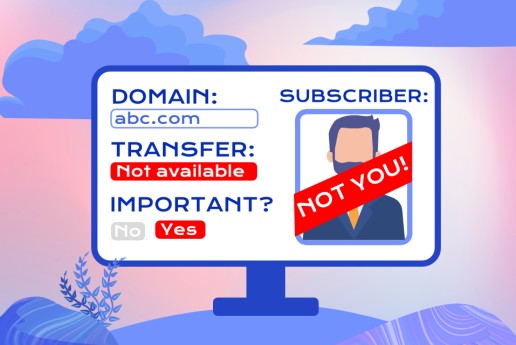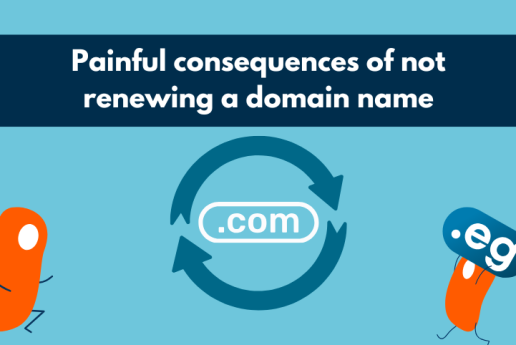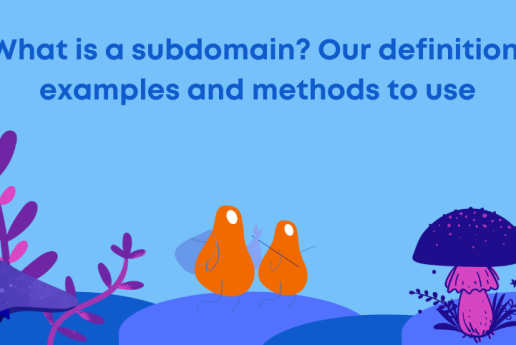What is a subdomain? Our definition, examples, and methods to use
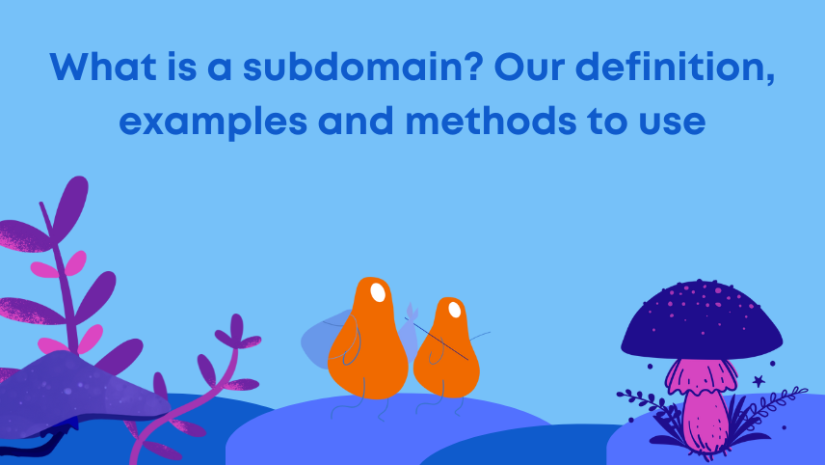
At the beginning of your adventure with domains, many concepts are new and often incomprehensible. Wondering what is a subdomain and how it can affect your online presence? If so, you're in the right place!
In this article, we will explain in a friendly and accessible way what a subdomain is, how it works, and how you can use it. Whether you are a beginner in the world of the Internet or an experienced webmaster, you are sure to find something here for you.
What is a subdomain?
A subdomain includes your domain name. A subdomain is also a part of the main domain that allows you to organize your website. It can be compared to an additional division on your site that allows you to better organize your content.
For example, our main domain is "letsdomains.com", so we can create a subdomain called "blog.letsdomains.com". This subdomain can be used to host our blog, while the main domain is used to host our home page with a domain finder.
You can do the same with your website. In the subdomain blog.yourwebsite.com, you can maintain a blog to complement your store. Then in the subdomain store.yourwebsite.com, you can run your online store.

Why use a subdomain?
Wondering why use a subdomain? Subdomains are incredibly useful when you want to create separate sections on your site that have their own unique functions. For example, many companies use subdomains to create online stores, blogs, forums, and other sections on their site.
However, it is important to remember that subdomains are treated as separate websites by search engines such as Google. This means that you need to optimize each subdomain for SEO as if it were a separate website. Hopefully, we've answered your question about why to use a subdomain.
Subdomain URL structure
An important part of understanding how a subdomain works is its structure. The subdomain and domain both start with HTTP or Hypertext Transfer Protocol. This is responsible for communication between anyone typing in your site's address and the server on which your site is embedded.
Another part of a subdomain URL is the WWW subdomain, which does not always appear in web addresses. WWW is short for World Wide Web and refers to the name of the server and the service it offered. WWW refers to websites, and it means that a particular server hosts (maintains) information. The abbreviation WWW appears in addresses mainly due to long-standing practice and is not necessary.
The next part of the subdomain is just its name, e.g. blog, store, offer. Later, in the order of the address we have the domain name, e.g. letsdomains or yourwebsite and after another dot we see the extension, e.g. .com, .org, .net.
A subdomain URL address is quite long, and a subdomain is one of the components of that address. Now you know why use a subdomain and how a subdomain URL address is structured. But what is the difference between a domain and a subdomain?

Domain vs subdomain
When it comes to subdomains, we often also meet the term domain, and while these terms refer to an Internet address, there are ultimately several important differences between them:
-
Position in the hierarchy. The record of domains, starting with extensions, is divided by level. A domain, such as yourwebsite.com is a second level domain. The first row is the .com extension, and the second row is the domain name "yourwebsite." A subdomain is each subsequent level. When you create a blog site, such as blog.yourwebsite.com, you create a third level domain. In the case of the subdomain en.blog.yourwebsite.com, you create a fourth level domain.
-
Functionality. Typically, a domain is used for offering key services or products. With subdomains, you offer additional services or products, or those in other languages. Often subdomains are used to present a mobile version of the site, such as m.yourwebsite.com.
-
Management. You can manage the domain only with the registrar (which is Let's Domains) with whom you registered the domain. You can only manage a subdomain with the hosting. Below we describe how to create a subdomain and where you can manage your domain.
-
SEO. Search engines regard domains and subdomains as separate websites. The subdomain blog.yourwebsite.com is indexed and ranked independently of the main domain yourwebsite.com. Considering these differences, the SEO tactics for a domain and a subdomain should be different. For instance, you may choose to optimize the main domain for a specific set of keyword phrases, while the subdomain may be customized for another.
Despite the differences (domain vs. subdomain), domains and subdomains allow you to organize your website effectively, therefore you should use subdomains.
Subdomain vs subdirectory
As you begin your adventure with domains, you may also encounter the concept of a subpage. Subdomain and subdirectory are two different elements in the context of website structure. How do we differentiate them in this case?
A subdomain is the third level of a domain in the URL hierarchy. For example, in the address subdomain.yourwebsite.com, the subdomain is a subdomain of the domain yourwebsite.com. A subdirectory, on the other hand, is a page or section of the site that is part of the main domain. A subdirectory URL might look like this: "yourwebsite.com/subdirectory".

Can we extract additional differences besides URL construction? Of course! Here are some of them:
-
Usage: a subdomain is often used to separate different sections or applications of a site, such as a blog, store or forum. It can also be used to create language versions of a site, such as en.yourwebsite.com for the English version. A subdirectory is usually used to represent a specific topic or section of the site, such as a blog article, a product category in a store, etc.
-
Configuration: a subdomain requires configuration at the DNS level and may point to a different server than the main domain. Sub-site does not require a separate DNS configuration. It is created within a content management system (CMS) or server file structure.
-
SEO (Search Engine Optimization): Search engines view subdomains as separate sites. This means that a subdomain must build its own authority and ranking in search results. A subdirectory, on the other hand, inherits the authority of the main domain and is treated as part of the same site.
-
Technical capabilities: a subdomain can be used to host (maintain) different platforms or technologies. For example, the main site may be on WordPress, while a subdomain may host a web application written in Node.js. A subdirectory usually runs on the same platform or technology as the main site.
A subdomain is treated as a separate entity in the context of a domain, while a subdirectory is part of the main site and inherits its properties. In this situation, the choice between a subdomain and a subpage should depend on your needs.
How to create a subdomain?
As we have mentioned before, domain management is possible with the registrar where you registered your domain. If you maintain domains at Let's Domains and your domain uses a DNS hosting service, see how you can set up and set up subdomains.
How to get to manager?
How to get to the manager? If you want to manage your domain in Let's Domains log into the administration panel. On the left side, expand Domains and click the Domains list option. Next to the domain you want to manage, find the Domain details option.

Once you go to Domain Details, make sure that the Current delegation option includes Let's Domains servers:
-
dns1.letsdomains.com
-
dns2.letsdomains.com
Only then you will be able to manage your domain and subdomains directly in the Let's Domains panel. Find the DNS hosting option and click Manage.
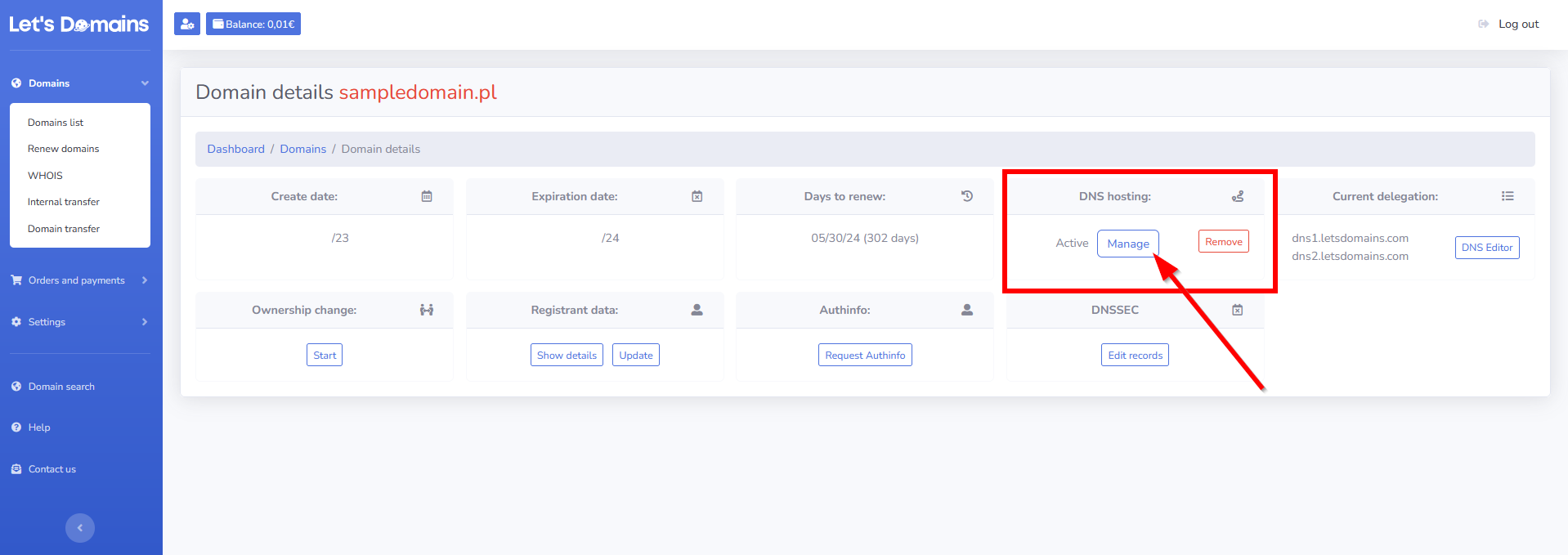
How to add subdomain?
How to add subdomain? After navigating to DNS hosting options, click +Add record to create any subdomain. Using the A record, you can setup the domain to any server. Select Record Type, enter the name of the subdomain, and in the Value field, insert the IP address of the server where you maintain the subdomain content. A subdomain example is shop, blog or offer.
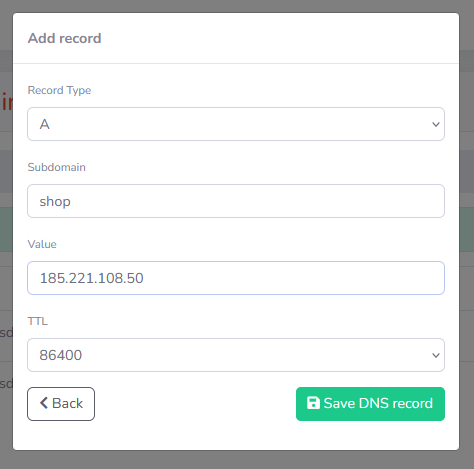
If you don't know the IP address of the server, you can ask the hosting provider to give it to you. Note that subdomain redirection will only be possible if your domain is configured on the target server.
When creating a subdomain, be sure to also create a page on the target server, otherwise the subdomain will not display content. You may install WordPress or other software to help you display the site.
Transfer your domains to Let's Domains!
How long does it take for a subdomain to become active?
Wondering how long does it take for a subdomain to become active? A subdomain is usually active from the moment you setup its record. The time it takes to display data under a subdomain can vary. It depends on several factors:
-
The set TTL (Time to Live) parameter, which is responsible for the validity period of the data. The parameter is expressed in seconds, usually in the range from 3600 to 14400. The value of 3600 seconds corresponds to an hour, so after an hour, up-to-date data is downloaded from the server to which the subdomain is directed (or on which it is configured).
-
From DNS servers that update information about the subdomain created and the software installed. It is not uncommon for a subdomain to be published immediately, but access to it may be delayed precisely because of DNS servers. Why? DNS propagation (that is, spreading information from your server) is the process of updating every server on the network with new information about your domain. Depending on your location, this process can take up to a few minutes to as long as 72 hours. Although it usually takes 24 hours in extreme cases.
If after a couple of minutes after creating a subdomain, you still don't see it online – don't panic. Usually it's a matter of TTL time and DNS servers where you maintain the subdomain.
What is a subdomain finder?
Wondering what is a subdomain finder? It's a tool that analyses and scans your site for active subdomains. How do typical subdomain finder tools work?
-
They scan DNS servers looking for subdomains associated with a particular main domain. They can do this by directly querying DNS servers or using available databases.
-
They use SSL certificates to find subdomains that have certificates assigned to them.
-
They review web content for links to potential subdomains.
-
Some tools use brute-force techniques, trying different combinations of subdomain names based on dictionaries of words and phrases to find active subdomains.
There is no tool that can guarantee finding all subdomains, especially if they are hidden or not publicly available. A combination of different methods and tools can significantly increase the probability of finding most of the subdomains associated with a given main domain.
What is a subdomain? It is the solution you need
Depending on a given project, a subdomain is a solution that can easily divide a site and grow your business at the same time. We hope that thanks to this article you now know what a subdomain is, what possibilities it offers, and how to use it.
FAQ – subdomains
1. What is the main purpose of a subdomain?
To separate distinct parts of a website, like a blog, store, or language version.
2. Do subdomains affect SEO?
Yes. Search engines treat subdomains as separate websites, requiring independent SEO optimization.
3. How long does it take for a subdomain to work?
It can appear instantly but may take up to 72 hours due to DNS propagation.
4. Can subdomains run on different servers?
Yes. You can point a subdomain to a different server or even a different technology stack.
5. Which is better for SEO: subdomain or subdirectory?
It depends. Subdirectories inherit authority faster, but subdomains are ideal for independent projects or multilingual sites.
I am promoting our services, products, and software. I work closely with the development and support teams, create campaigns and content, manage social media, and translate complex technical concepts into clear communication for our customers.





